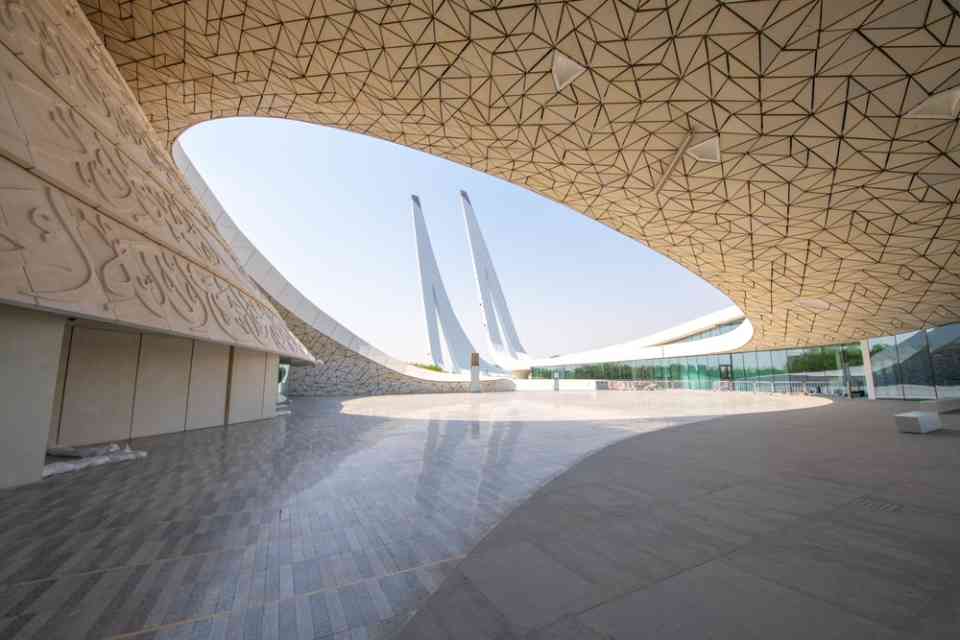Qatar’s Ambitious Leap Toward Tech-Driven Future With Projections Indicating a 5.5% GDP Growth by 2026

A recent PwC CEO survey highlighted that 84% of Qatar’s top business leaders are optimistic about the emirate’s growth in 2024, with 71% planning to increase hiring—figures nearly twice the global average. Additionally, 68% of respondents expressed confidence in their firms’ revenue potential over the next three years, reinforcing the nation’s positive economic outlook.
Projections indicate that Qatar’s GDP growth will accelerate to 5.5% by 2026, up from the current 2.4%, potentially placing it among the fastest-growing global economies. S&P Global Ratings reaffirmed Qatar’s AA/A-1+ credit rating, citing its strong fiscal and balance-of-payments positions, bolstered by vast hydrocarbon reserves, a dominant role in the global liquefied natural gas (LNG) market, and substantial assets in the $525 billion Qatar Investment Authority.
Despite hydrocarbons accounting for 90% of exports and 80% of revenue, Qatar is preparing for a post-gas future. The country has initiated strategic investments and created a roadmap to transition toward a knowledge-based economy, aiming to diversify industries, attract foreign investment, and enhance the business environment.
Digital transformation plays a central role in these efforts. PwC Middle East’s technology partner Yazen El Safi pointed out that AI, cloud infrastructure, and data-driven systems are enhancing competitiveness across industries, supported by robust infrastructure, strategic collaborations, and workforce development. This digital focus aligns with Qatar’s long-term vision of reducing dependence on hydrocarbons and positioning itself as an innovation-led economy.
However, the country faces challenges in balancing economic expansion with environmental goals. In 2023, Qatar was among the world’s highest per capita greenhouse gas emitters, according to the European Commission’s Emissions Database. While Qatar aims to reduce emissions by 25% by 2030, its North Field Expansion project will more than double LNG output to 126 million tons annually by the same year. Cleaner production methods, including carbon capture and storage (CCS), are being integrated, with CCS capacity projected to increase by 400% by 2035.
Renewable energy is another priority, with projects like the Al Kharsaah solar farm and the Dukhan plant expected to make solar power 30% of Qatar’s energy mix by 2030. These initiatives will support clean energy for households, businesses, and hydrocarbon production. In parallel, QatarEnergy is constructing the world’s largest “blue” ammonia plant to produce low-carbon fuels, further diversifying the energy landscape.
Qatar is also advancing its fintech and digital economy. Recent regulatory changes by the Qatar Central Bank and institutional backing from the Qatar Financial Centre have accelerated digital adoption. The launch of the Fawran instant payment system and policies supporting e-Know-Your-Customer systems have spurred fintech growth, which accounted for nearly half of all venture capital deals in Qatar in 2024, according to MAGNiTT.
Beyond finance, Qatar is making strides in applying technology to healthcare, education, agriculture, and robotics. Infrastructure spending surged by 30% in 2023, with the government actively promoting innovation through initiatives such as Startup Qatar and attracting global firms like Microsoft and Google to establish local data centers.
While Qatar leverages its high GDP per capita to build a tech-driven economy, it relies heavily on imported technology and talent. Experts noted that government policies aimed at attracting foreign innovators are helping position the country as a hub for global tech investment. Despite these advancements, Qatar faces competition from regional peers like the UAE and Saudi Arabia and must overcome challenges such as limited market scalability and a cautious investment culture.
| GDP (nominal) | Capital | Head of State | Head of Government | GDP (nominal) per capita | GDP (PPP) | GDP (PPP) | GDP (PPP) per capita |
|---|---|---|---|---|---|---|---|
| Qatar | Doha | Sheikh Tamim ibn Hamad Al Thani | Mohammed bin Abdulrahman bin Jassim Al Thani | 235.500 | 81.968 | 328.134 | 114.210 |
Have you read?
Countries Most in Debt to the International Monetary Fund (IMF).
Most Successful Unicorn Startups.
$100 Billion Club: Richest People With The 12-Figure Fortunes.
Largest electricity consumers in the world, by country (in terawatt-hours).
Countries that Export the Most Goods and Services.
Bring the best of the CEOWORLD magazine's global journalism to audiences in the United States and around the world. - Add CEOWORLD magazine to your Google News feed.
Follow CEOWORLD magazine headlines on: Google News, LinkedIn, Twitter, and Facebook.
Copyright 2025 The CEOWORLD magazine. All rights reserved. This material (and any extract from it) must not be copied, redistributed or placed on any website, without CEOWORLD magazine' prior written consent. For media queries, please contact: info@ceoworld.biz








